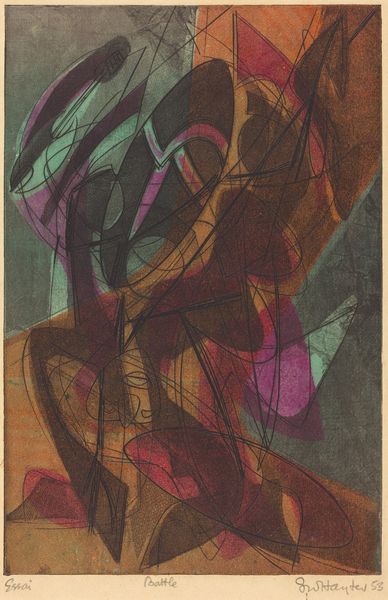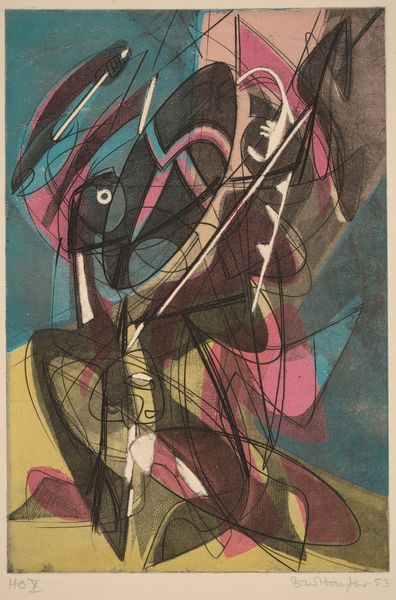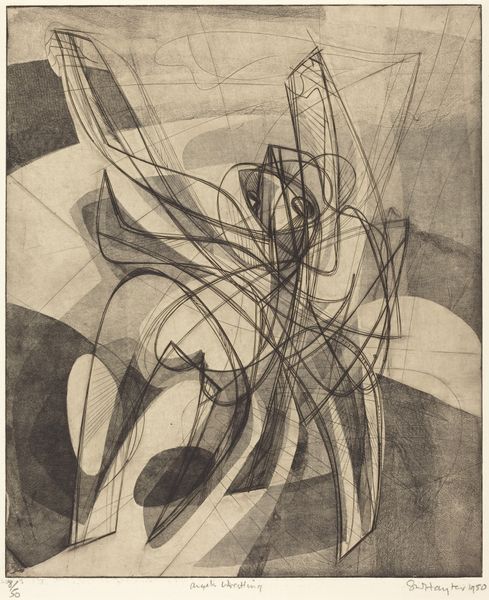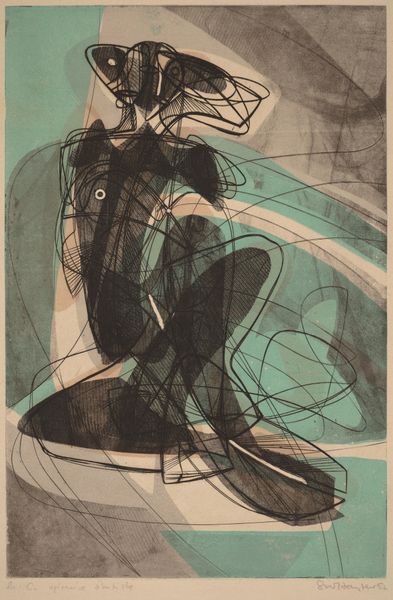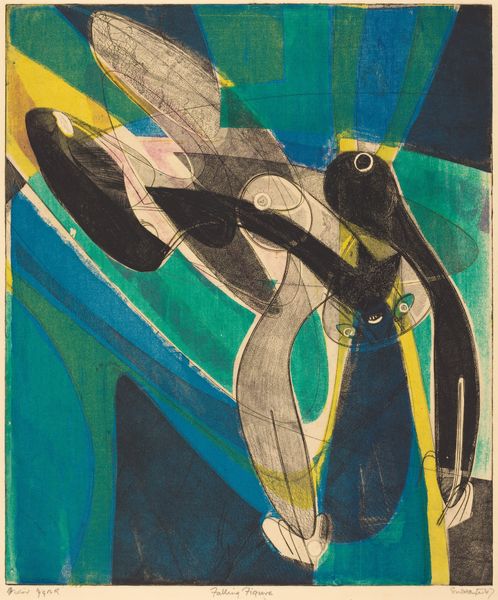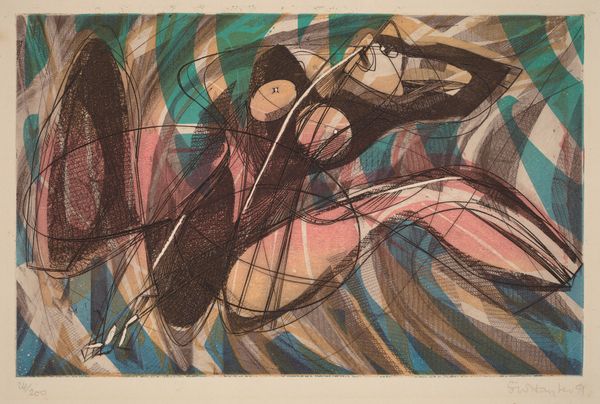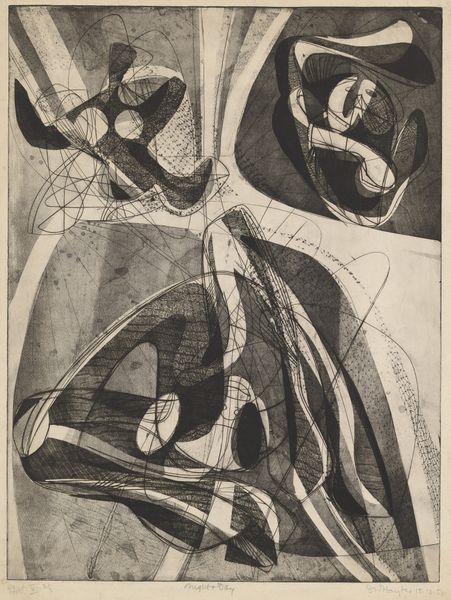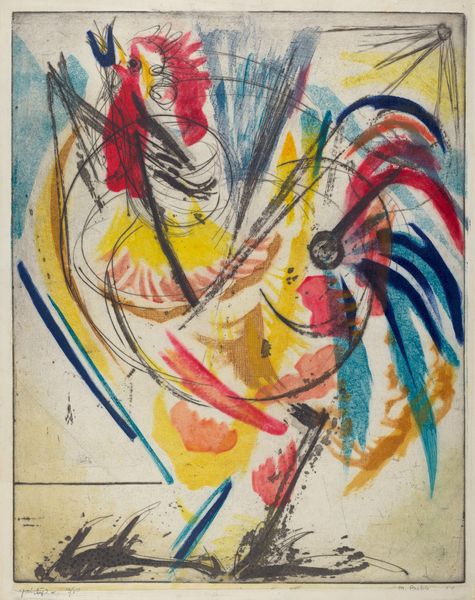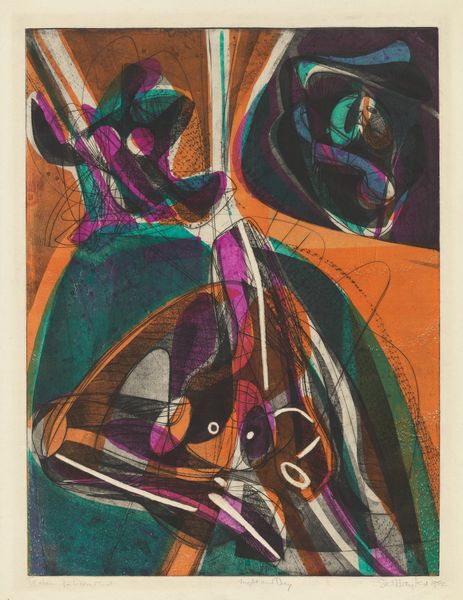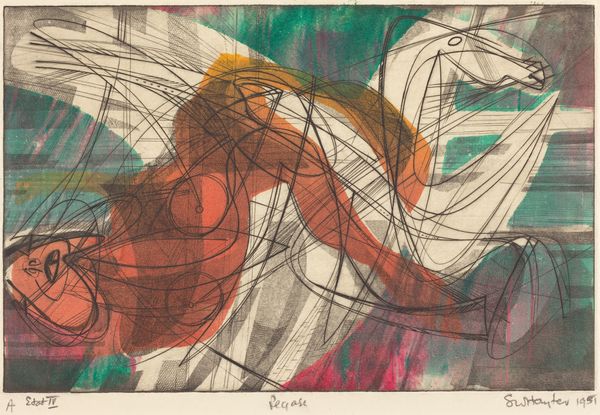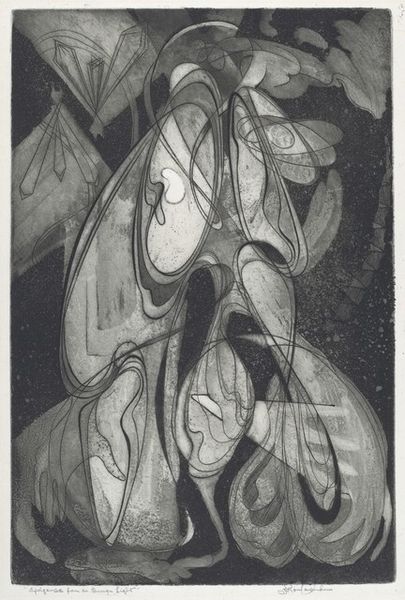
print, etching
#
abstract-expressionism
#
abstract painting
# print
#
etching
#
abstraction
#
line
Dimensions: plate: 38.1 x 31.4 cm (15 x 12 3/8 in.) sheet: 54.3 x 44.1 cm (21 3/8 x 17 3/8 in.)
Copyright: National Gallery of Art: CC0 1.0
Curator: Before us we have "Jeux d'eau (Water Play)," a 1953 print by Stanley William Hayter, an intriguing example of abstract expressionism rendered through the etching process. Editor: Immediately, it strikes me as a turbulent piece. There’s a frenetic energy in the lines, almost chaotic, but with an underlying sense of playful release suggested by the title. Curator: Indeed. Hayter was at the forefront of experimental printmaking, particularly through Atelier 17. Considering its post-war creation, can we read this turbulence as a reflection of societal upheaval and the search for new visual languages to express complex emotions? Editor: The layering of color – the blues, browns, and almost fleeting pinks – suggests depth but also obscured forms, like submerged memories or half-formed ideas. The symbolic resonance of water itself… its fluidity can represent both life-giving force and destructive power. Is Hayter playing with that duality here? Curator: He very well might be. His work often delved into subconscious realms, reflecting a fascination with surrealism and automatic drawing. The "Water Play" here could be the mind at play, releasing suppressed thoughts in an abstract visual cascade, speaking to anxieties related to global affairs. Editor: The dense network of lines does feel like a psychological map of sorts, charting the unseen currents of feeling. Do you see an echo of other symbolic artistic works about anxiety present in "Jeux d'eau?" Curator: It's plausible, particularly when contextualizing this within post-war existentialist thought and anxiety about atomic warfare, ideas Hayter was undoubtedly familiar with and that perhaps find resonance within these lines and obscured shapes. Editor: Seeing it through that lens, those swirling lines no longer feel random but imbued with a sense of urgency. There's beauty here, certainly, but also an unsettling edge. Curator: It reveals a critical shift in art toward non-representational forms as artists sought novel approaches to understanding an era defined by anxiety and rapidly transforming global conditions. Editor: This work definitely pulls at something visceral. I find myself considering how its creation would act as an alternative form of expression under suppression. Curator: It is exciting to consider how a dialogue such as this allows us to expand understanding about how historical moment is registered into this artwork’s identity.
Comments
No comments
Be the first to comment and join the conversation on the ultimate creative platform.
